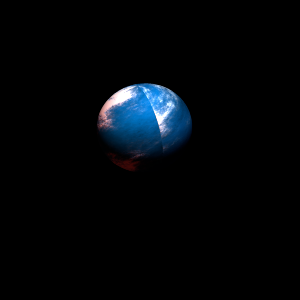|
|
Space Astro
|
Info for exoplanet "Monepros Bele"
| Scientific (actual) data |
|---|
| Name | Kepler-147 b |
| Planet status | Confirmed |
| Radius | 0.136 |
| Orbital period | 12.6106 |
| Semi major axis | 0.113 |
| Discovered | 2014 |
| Updated | 2021-02-05 |
| Tconj | 2454970 |
| Impact parameter | 0.51 |
| Publication | Announced on a website |
| Detection type | Primary Transit |
| Alternate names | 2MASS J19115418+3905138 b, K00392.02, KIC 3942670 b, KOI-392 b, KOI-392.02, WISE J191154.17+390513.8 b |
| Star name | Kepler-147 |
| Right ascension | 287.98° |
| Declination | 39.09° |
| Mag j | 12.786 |
| Mag h | 12.475 |
| Mag k | 12.416 |
| Star distance | 1073.89 |
| Star metallicity | 0.078 |
| Star mass | 1.01 |
| Star radius | 1.47 |
| Star temperature | 6012 |
| Star alternate names | 2MASS J19115418+3905138, KIC 3942670, KOI-392, WISE J191154.17+390513.8 |
| Wikipedia article | Kepler-147 b |
Back
| |
| Fictional info (?) |
|---|
| Suggested name | Monepros Bele |
| Planet type | Terrestrial |
| As seen from Kepler-147, in a frame of reference that rotates with the orbital motion, it appears to rotate only once every two years.
The inhospitable lakes are crowded with unpredictable advanced insects called the "Mosso". They spend their life there by consuming the Tiapoly. Mosso are closely similar to the Thysteph Far but have scales and vary in length from 10 to 14 mm. Mosso are known to reproduce at temperatures from 120 to 190°C and severe infection. |
| Estimated population | 80000000000 |
| Atmosphere | Oxygen | 57% |
| Methane | 42% |
| Water | 0.6% |
| Carbon dioxide | 0.041% |
| Atmospheric pressure | 40 bar |
 |
| No known satellites |
| Google search for Monepros bele |
|
Website by Joachim Michaelis
|
|
|
|